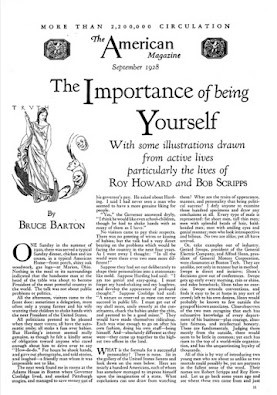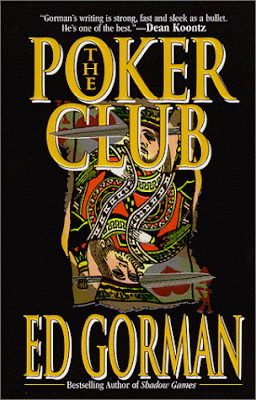|
The detective story is a game. It is more—it is a sporting
event. And the author must play fair with the reader. He can no more resort
to trickeries and deceptions and still retain his honesty than if he cheated
in a bridge game. He must outwit the reader, and hold the reader’s interest,
through sheer ingenuity. For the writing of detective stories there are very
definite laws—unwritten, perhaps, but none the less binding: and every
respectable and self-respecting concocter of literary mysteries lives up to
them.
Herewith, then, is a sort of
Credo, based partly on the practice of all the great writers of stories, and
partly on the promptings of the honest author’s inner conscience. To wit:
1. The
reader must have equal opportunity with the detective for solving the
mystery. All clues must be plainly stated and described.
2. No willful
tricks or deceptions may be played on the reader other than those played
legitimately by the criminal on the detective himself.
3. There
must be no love interest in the story. To introduce amour is to clutter up a
purely intellectual experience with irrelevant sentiment. The business in
hand is to bring a criminal to the bar of justice, not to bring a lovelorn
couple to the hymeneal altar.
4. The
detective himself, or one of the official investigators, should never turn
out to be the culprit. This is bald trickery, on a par with offering some one
a bright penny for a five-dollar gold piece. It’s false pretenses.
5. The
culprit must be determined by logical deductions—not by accident or
coincidence or unmotivated confession. To solve a criminal problem in this
latter fashion is like sending the reader on a deliberate wild-goose chase,
and then telling him, after he has failed, that you had the object of his
search up your sleeve all the time. Such an author is no better than a
practical joker.
6. The
detective novel must have a detective in it; and a detective is not a
detective unless he detects. His function is to gather clues that will
eventually lead to the person who did the dirty work in the first chapter;
and if the detective does not reach his conclusions through an analysis of
those clues, he has no more solved his problem than the schoolboy who gets
his answer out of the back of the arithmetic.
7. There
simply must be a corpse in a detective novel, and the deader the corpse the
better. No lesser crime than murder will suffice. Three hundred pages is far
too much pother for a crime other than murder. After all, the reader’s
trouble and expenditure of energy must be rewarded. Americans are essentially
humane, and therefore a tiptop murder arouses their sense of vengeance and
horror. They wish to bring the perpetrator to justice; and when “murder most
foul, as in the best it is,” has been committed, the chase is on with all the
righteous enthusiasm of which the thrice gentle reader is capable.
8. The
problem of the crime must be solved by strictly naturalistic means. Such
methods for learning the truth as slate-writing, ouija-boards, mind-reading,
spiritualistic séances, crystal-gazing, and the like, are taboo. A reader has
a chance when matching his wits with a rationalistic detective, but if he
must compete with the world of spirits and go chasing about the fourth
dimension of metaphysics, he is defeated ab initio [from the beginning].
9. There
must be but one detective—that is, but one protagonist of deduction—one deus
ex machine [god from the machine]. To bring the minds of three or four,
or sometimes a gang of detectives to bear on a problem is not only to
disperse the interest and break the direct thread of logic, but to take an
unfair advantage of the reader, who, at the outset, pits his mind against
that of the detective and proceeds to do mental battle. If there is more than
one detective the reader doesn’t know who his co-deductor is. It’s like
making the reader run a race with a relay team.
10. The
culprit must turn out to be a person who has played a more or less prominent
part in the story—that is, a person with whom the reader is familiar and in
whom he takes an interest. For a writer to fasten the crime, in the final
chapter, on a stranger or person who has played a wholly unimportant part in
the tale, is to confess to his inability to match wits with the reader.
11. Servants—such
as butlers, footmen, valets, game-keepers, cooks, and the like—must not be
chosen by the author as the culprit. This is begging a noble question. It is
a too easy solution. It is unsatisfactory, and makes the reader feel that his
time has been wasted. The culprit must be a decidedly worth-while person—one
that wouldn’t ordinarily come under suspicion; for if the crime was the
sordid work of a menial, the author would have had no business to embalm it
in book-form.
12. There
must be but one culprit, no matter how many murders are committed. The
culprit may, of course, have a minor helper or co-plotter; but the entire
onus must rest on one pair of shoulders: the entire indignation of the reader
must be permitted to concentrate on a single black nature.
13. Secret
societies, camorras, mafias, et al., have no place in a
detective story. Here the author gets into adventure fiction and
secret-service romance. A fascinating and truly beautiful murder is
irremediably spoiled by any such wholesale culpability. To be sure, the
murderer in a detective novel should be given a sporting chance, but it is
going too far to grant him a secret society (with its ubiquitous havens, mass
protection, etc.) to fall back on. No high-class, self-respecting murderer
would want such odds in his jousting-bout with the police.
14. The
method of murder, and the means of detecting it, must be rational and
scientific. That is to say, pseudo-science and purely imaginative and
speculative devices are not to be tolerated in the roman policier. For
instance, the murder of a victim by a newly found element—a super-radium, let
us say—is not a legitimate problem. Nor may a rare and unknown drug, which
has its existence only in the author’s imagination, be administered. A
detective-story writer must limit himself, toxicologically speaking, to the
pharmacopoeia. Once an author soars into the realm of fantasy, in the Jules
Verne manner, he is outside the bounds of detective fiction, cavorting in the
uncharted reaches of adventure.
15. The
truth of the problem must at all times be apparent—provided the reader is
shrewd enough to see it. By this I mean that if the reader, after learning
the explanation for the crime, should reread the book, he would see that the
solution had, in a sense, been staring him in the face—that all the clues
really pointed to the culprit—and that, if he had been as clever as the
detective, he could have solved the mystery himself without going on to the
final chapter. That the clever reader does often thus solve the problem goes
without saying. And one of my basic theories of detective fiction is that, if
a detective story is fairly and legitimately constructed, it is impossible to
keep the solution from all readers. There will inevitably be a certain number
of them just as shrewd as the author; and if the author has shown the proper
sportsmanship and honesty in his statement and projection of the crime and
its clues, these perspicacious readers will be able, by analysis, elimination
and logic, to put their finger on the culprit as soon as the detective does.
And herein lies the zest of the game. Herein we have an explanation for the
fact that readers who would spurn the ordinary “popular” novel will read
detective stories unblushingly.
16. A
detective novel should contain no long descriptive passages, no literary
dallying with side-issues, no subtly worked-out character analyses, no “atmospheric”
preoccupations. Such matters have no vital place in a record of crime and
deduction. They hold up the action, and introduce issues irrelevant to the
main purpose, which is to state a problem, analyze it, and bring it to a
successful conclusion. To be sure, there must be a sufficient descriptiveness
and character delineation to give the novel verisimilitude; but when an
author of a detective story has reached that literary point where he has
created a gripping sense of reality and enlisted the reader’s interest and
sympathy in the characters and the problem, he has gone as far in the purely “literary”
technique as is legitimate and compatible with the needs of a
criminal-problem document. A detective story is a grim business, and the
reader goes to it, not for literary furbelows and style and beautiful
descriptions and the projection of moods, but for mental stimulation and
intellectual activity—just as he goes to a ball game or to a cross-word
puzzle. Lectures between innings at the Polo Grounds on the beauties of
nature would scarcely enhance the interest in the struggle between two
contesting baseball nines; and dissertations on etymology and orthography
interspersed in the definitions of a cross-word puzzle would tend only to
irritate the solver bent on making the words interlock correctly.
17. A
professional criminal must never be shouldered with the guilt of a crime in a
detective story. Crimes by house-breakers and bandits are the province of the
police department—not of authors and brilliant amateur detectives. Such
crimes belong to the routine work of the Homicide Bureaus. A really
fascinating crime is one committed by a pillar of a church, or a spinster
noted for her charities.
18. A
crime in a detective story must never turn out to be an accident or a
suicide. To end an odyssey of sleuthing with such an anti-climax is to play
an unpardonable trick on the reader. If a book-buyer should demand his two
dollars back on the ground that the crime was a fake, any court with a sense
of justice would decide in his favor and add a stinging reprimand to the
author who thus hoodwinked a trusting and kind-hearted reader.
19. The
motives for all crimes in detective stories should be personal. International
plottings and war politics belong in a different category of fiction—in
secret-service tales, for instance. But a murder story must be kept gemütlich,
so to speak. It must reflect the reader’s everyday experiences, and give him
a certain outlet for his own repressed desires and emotions.
20. And
(to give my Credo an even score of items) I herewith list a few of the
devices which no self-respecting detective-story writer will now avail
himself of. They have been employed too often, and are familiar to all true
lovers of literary crime. To use them is a confession of the author’s
ineptitude and lack of originality.
(a) Determining
the identity of the culprit by comparing the butt of a cigarette left at the
scene of the crime with the brand smoked by a suspect.
(b) The
bogus spiritualistic séance to frighten the culprit into giving himself away.
(c) Forged
finger-prints.
(d) The
dummy-figure alibi.
(e) The
dog that does not bark and thereby reveals the fact that the intruder is
familiar.
(f) The
final pinning of the crime on a twin, or a relative who looks exactly like
the suspected, but innocent, person.
(g) The
hypodermic syringe and the knockout drops.
(h) The
commission of the murder in a locked room after the police have actually
broken in.
(i) The
word-association test for guilt.
(j) The
cipher, or code letter, which is eventually unravelled by the sleuth.
|








